In a recent X-thread (formerly Twitter) on Bitcoin’s environmental, social and governance (ESG) impact, Daniel Batten, a leading BTC environmentalist and co-founder of CH4 Capital, presented a compelling case for the cryptocurrency. With the help of four distinctive charts, Batten highlighted Bitcoin’s sustainability compared to other major industries. “4 charts, 4 tweets, 4 reasons Bitcoin is the ultimate ESG asset,” stated Batten.
The Ultimate ESG Asset: Bitcoin
Renewable Energy Dominance: Batten began by emphasizing how BTC mining has ascended to be the “single most sustainably-powered global industry in the world.” Data reveals that a significant 52.6% of the energy for BTC comes from renewable sources. By contrast, the banking sector lags at 39.2%, the industrial sector at 32.0%, agriculture at 19.2%, gold industry at 12.8%, and iron & steel industry at a mere 9.8%.
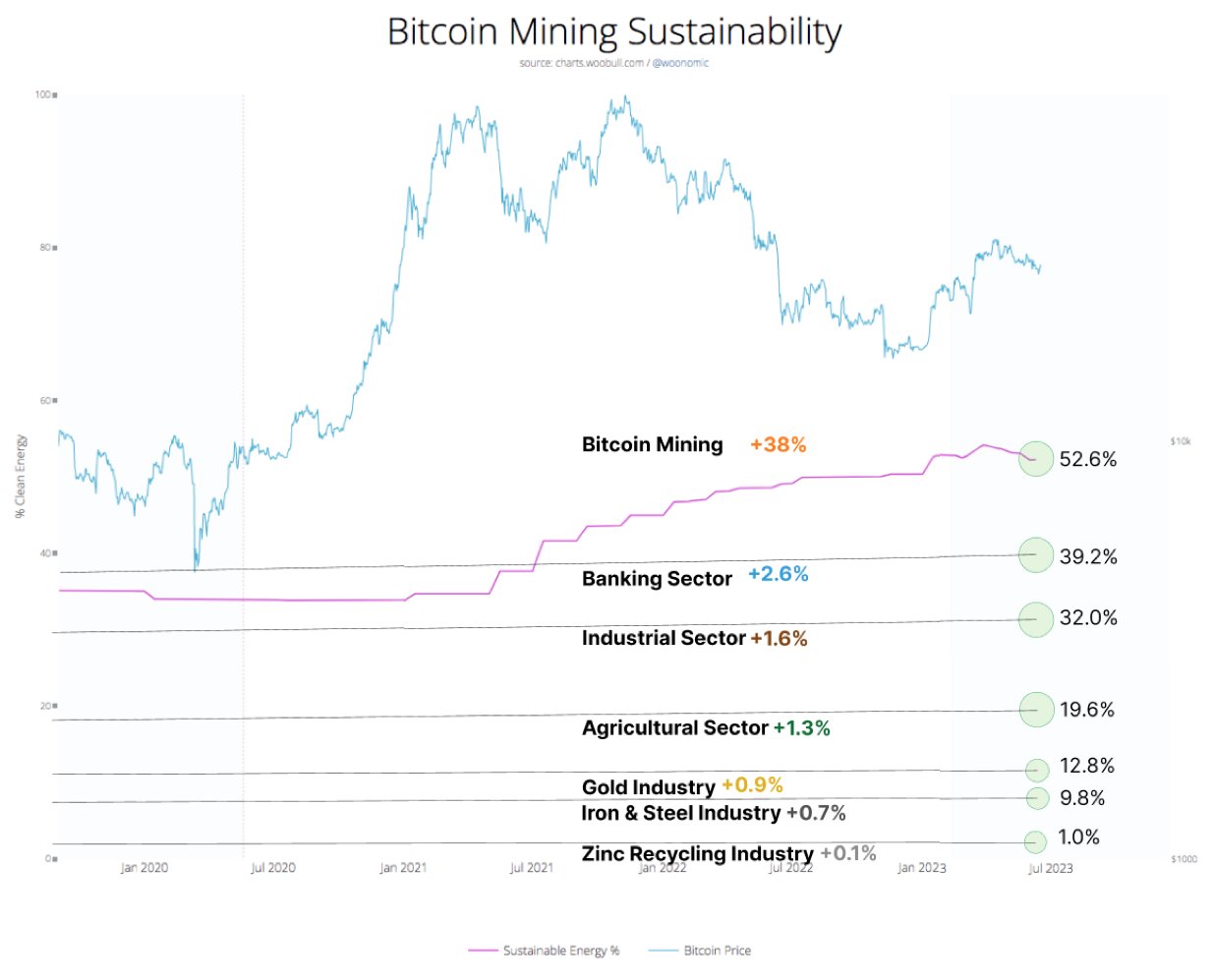
Consistent Emission Levels Amidst Growth: The second chart highlights BTC’s unique capability to maintain its emissions despite rampant growth metrics. Over the past four years, the network’s hash rate surged by 475%. Simultaneously, its price increased by 163%, and the total number of users grew by 289%. Yet, its emissions decreased by -9.4%. Batten noted, “Something no other industry has ever accomplished.”
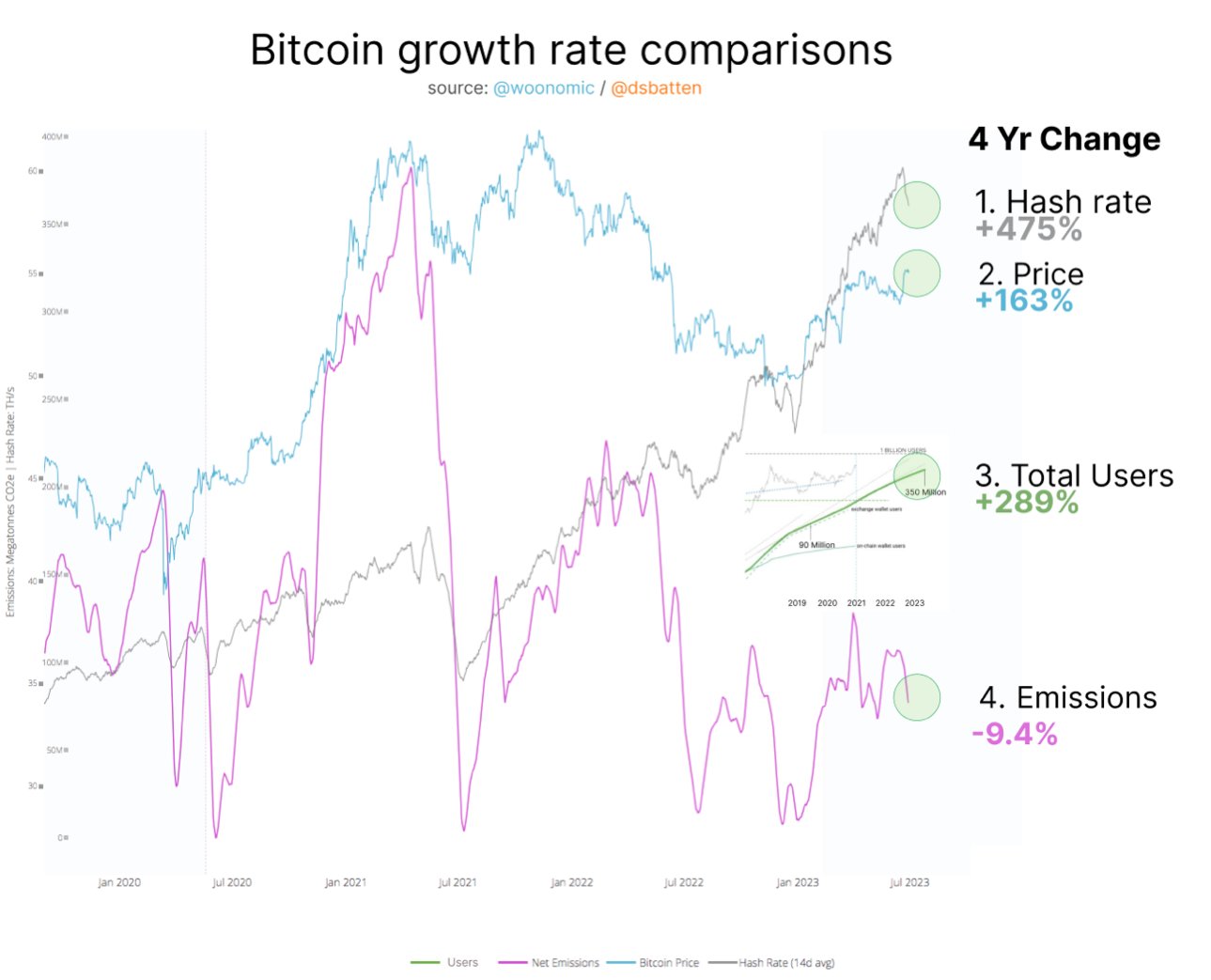
Lowest Emission Intensity: According to Batten’s third chart, “Bitcoin has halved its emission intensity inside four years to have the lowest emission intensity of any major global industry.” The data corroborates this, with Bitcoin’s emission intensity standing at 299 g/KWh, notably lower than industries like iron & steel (856 g/KWh), agricultural (725 g/KWh), gold (679 g/KWh), industrial (502 g/KWh), and banking (464 g/KWh).
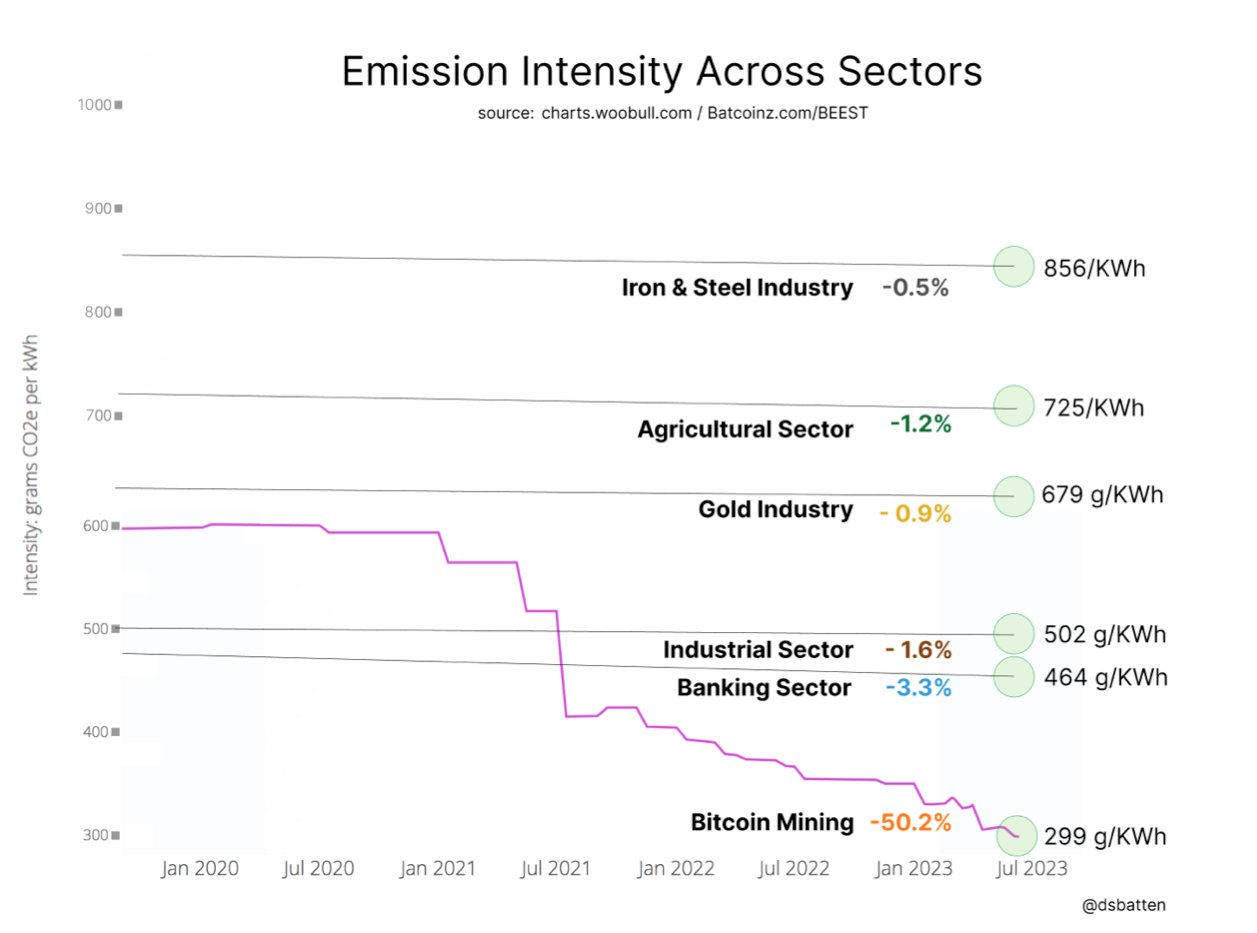
Decentralized Energy Source: The final chart elucidates BTC’s diversified energy composition, with hydro leading at 23.6%. Bitcoin’s decentralized nature means that unlike other industries, it isn’t anchored to the 36.7% coal-powered global grid. “Because Bitcoin mining is not anchored to the 36.7% coal powered global grid, it’s also the only major industry where fossil fuel is not the major source of power,” Batten affirmed.
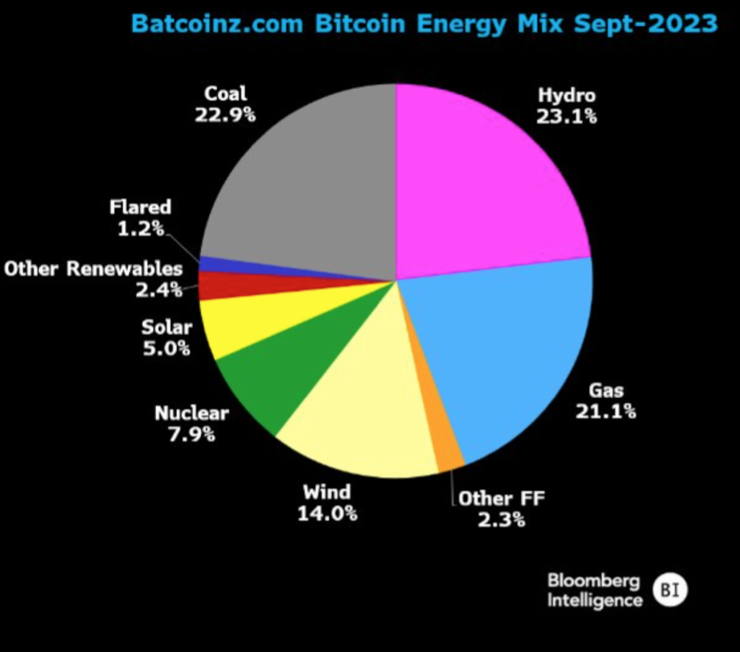
False Information Continues To Circulate
Importantly, it is crucial to continue fostering a deeper understanding of Bitcoin. Recent campaigns, including Greenpeace’s “Change the code,” backed by Ripple, have propagated potentially misleading narratives. Simultaneously, academic institutions and high-level research must be scrutinized for the accuracy of their data and underlying motivations. While the recent MIT study on Bitcoin mining, published in June, is a commendable effort, it is not without its shortcomings.
Recently, Batten offered insights into a recent MIT study on mining. He acknowledged the study’s strengths, such as its avoidance of outdated energy projection methods and its genuine interest in doing objective research. However, Batten raised concerns about certain inconsistencies, including a lack of updated data and non-representative datasets, emphasizing the need for more exhaustive and accurate research models.
He stated, “The article shows potential, but has many gaps too and we do not need another incomplete and non-representative mining model.” Batten recommended that researchers engage directly with key industry stakeholders for a more comprehensive understanding of the nuances.
At press time, BTC traded at $26,102.
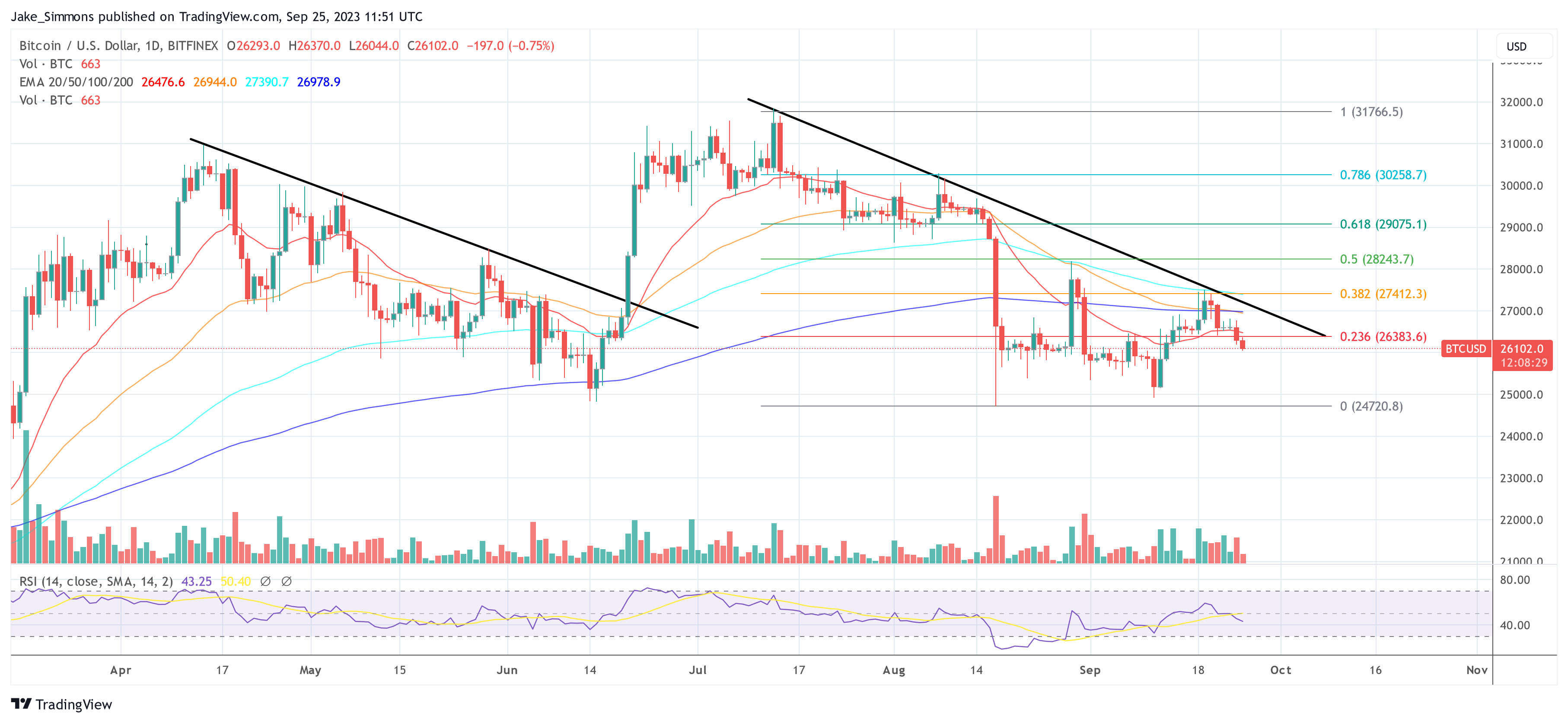
Source: https://bitcoinist.com/bitcoin-ultimate-esg-asset-expert/
